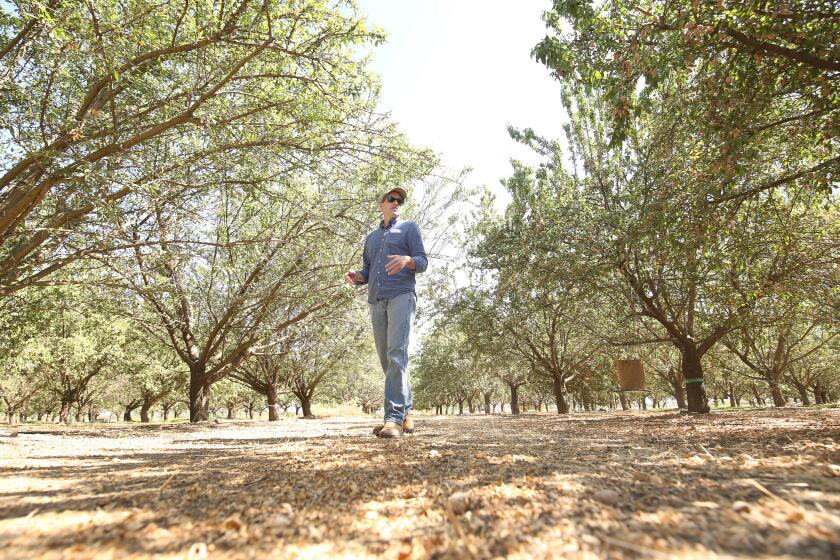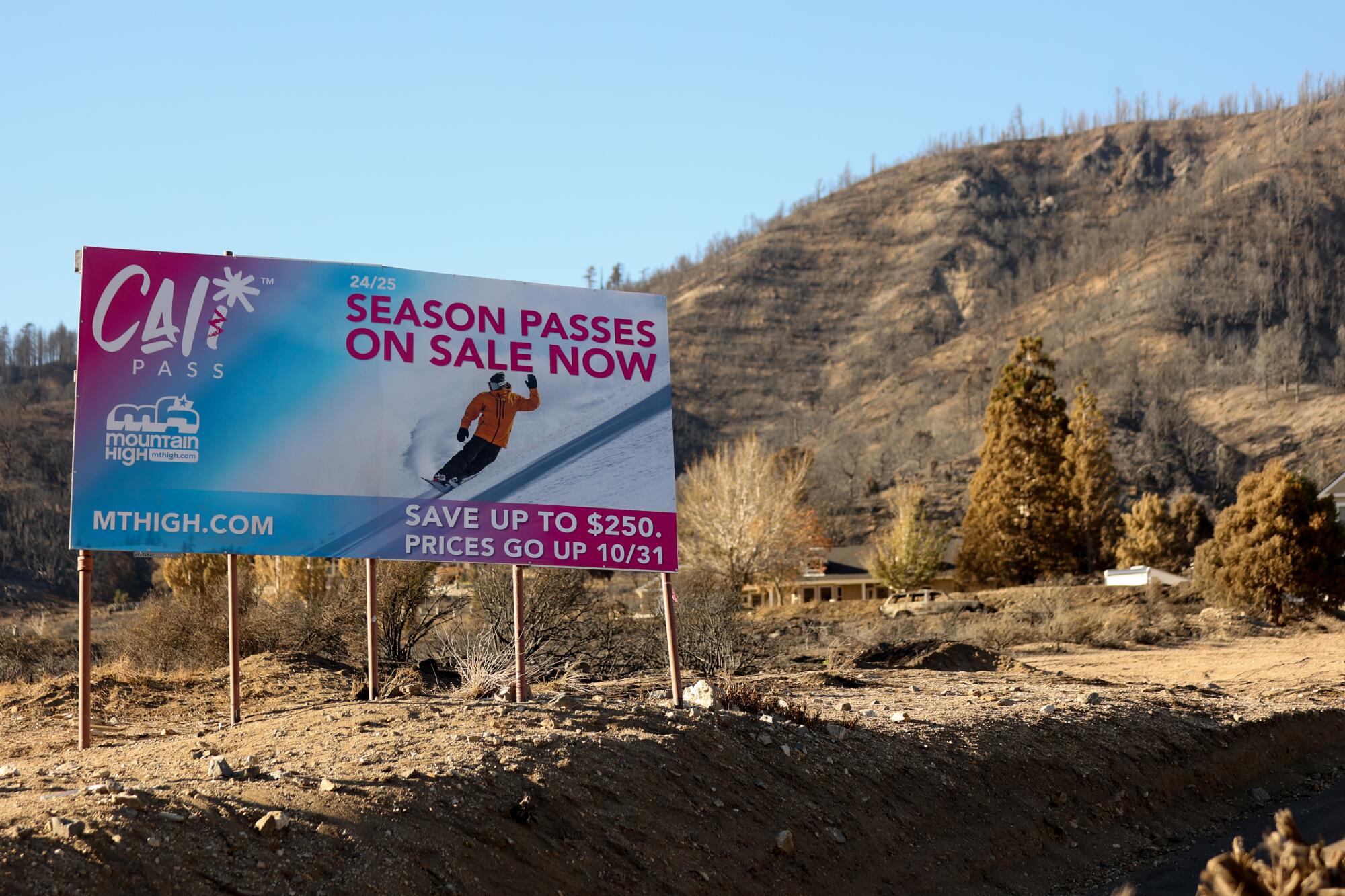
- Share via
WRIGHTWOOD, Calif. — It was early in the morning when Ben Smith drove his SUV to the top of Mountain High ski resort and looked south. Miles away and across a valley, he could see the ominous red glow of the Bridge fire amid the dark green pines of the Angeles National Forest.
By Smith’s estimate, the fire wouldn’t reach the resort for at least another day.
Then, the fire exploded.
By 6:30 that evening, the resort’s general manager would be racing east down Highway 2 past the town of Wrightwood as flames closed in on the road from both sides.
Smith had done everything he could to save the resort. He was the last to flee after his staff activated a battery of snow cannons to douse the ski area in water.
(Mountain High Resorts)
Now, there was just one thought running through his head: “Hopefully I make it out of here,” Smith recalled as he leaned against a wooden post at the resort’s Big Pines Lodge recently.
The fact the lodge and most of the nearby resort escaped the hellish firestorm is a testament to the work of Smith’s team and firefighters.
“When I left out of here ... I expected to come back to everything gone,” he said.
The Biden administration and Native tribes will commemorate the designation of the Chumash Heritage National Marine Sanctuary on Monday.
Now, roughly one month later, tree removal crews and electrical trucks crisscross the property. Mountain High operators are optimistic that the resort will open by Thanksgiving.
“Come wintertime — when the snow comes — you won’t even know there was a fire here,” said Damaris Cand, guest services manager.
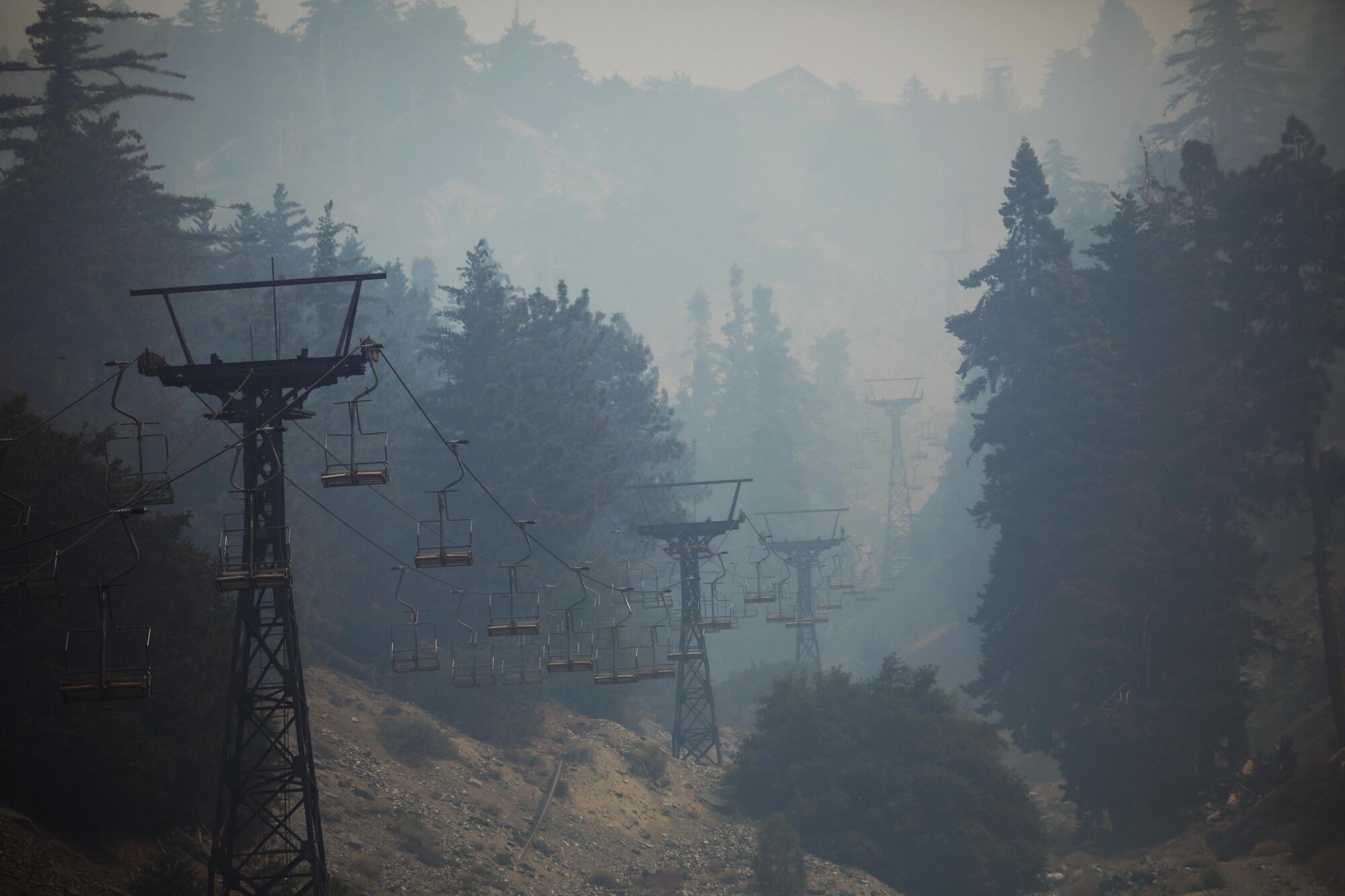
The Bridge fire began Sunday, Sept. 8, in the early afternoon, 11 miles south of the resort. By Monday, the fire was on Smith’s radar as it slowly inched closer.
On Tuesday, the fire would “explode” — engulfing tens of thousands of acres in a matter of hours, increasing in size tenfold.
At the resort’s staff meeting that early Tuesday morning, the mood was calm. The sky still was clear, and painted with the pinks and oranges of sunrise.
But Smith, who is the vice president and treasurer of the Wrightwood Fire Safe Council, saw potential for calamity, as winds were forecast to pick up.
He directed the team to start placing snowmaking guns strategically along the perimeter of the resort. Some 50 employees — enlisted from a wide range of departments — moved around the resort as the skies grew increasingly dark with smoke.
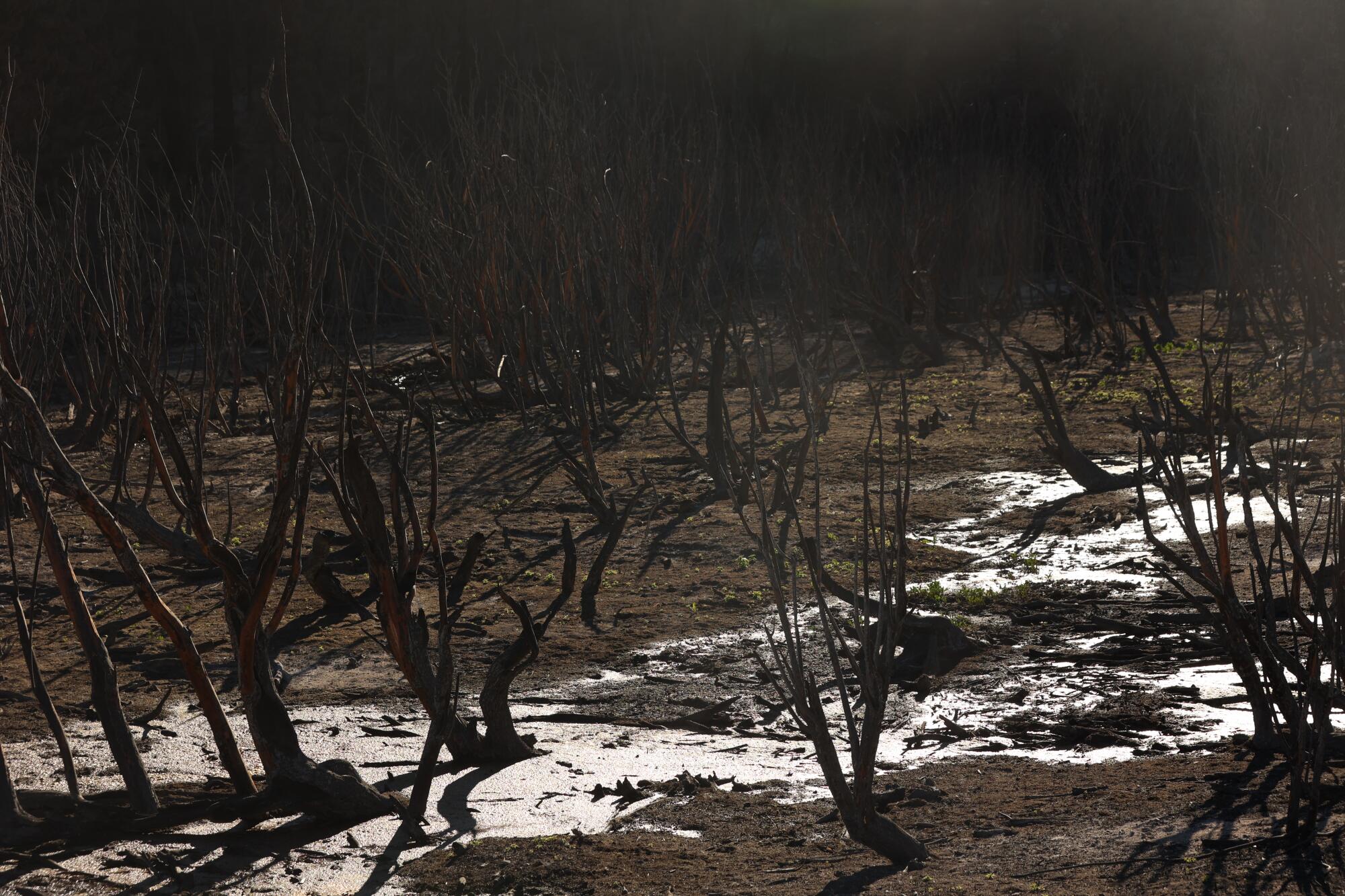
By early afternoon, Smith could no longer see more than 100 feet in front of him. There was no way to directly monitor the fire anymore.
Ash and debris — still on fire — started falling from the sky. At one point, a burning stick about a foot long hit the ground.
Employees started leaving, worried about safety and air quality.
An experimental program seeks to protect California almond trees from a pesky moth by using X-rays to sterilize the insects.
“I got out of here about 2 o’clock, and the sky was black,” said John McColly, vice president of sales and marketing at the resort. “A lot of smoke was being whipped up, and it had this reddish hue to it. … Just for the sake of my lungs, I probably need to get out of here,” he recalled thinking.
Then, around 4:30 p.m., the nightmare scenario that was unfathomable just a few hours earlier became reality. A wall of flames over 300 feet tall by Smith’s estimate crested the ridge, roaring with the sound of a jet engine and blasting the resort with superheated wind and debris.
What had started as cautious fire protection preparations had suddenly became a fight for survival.
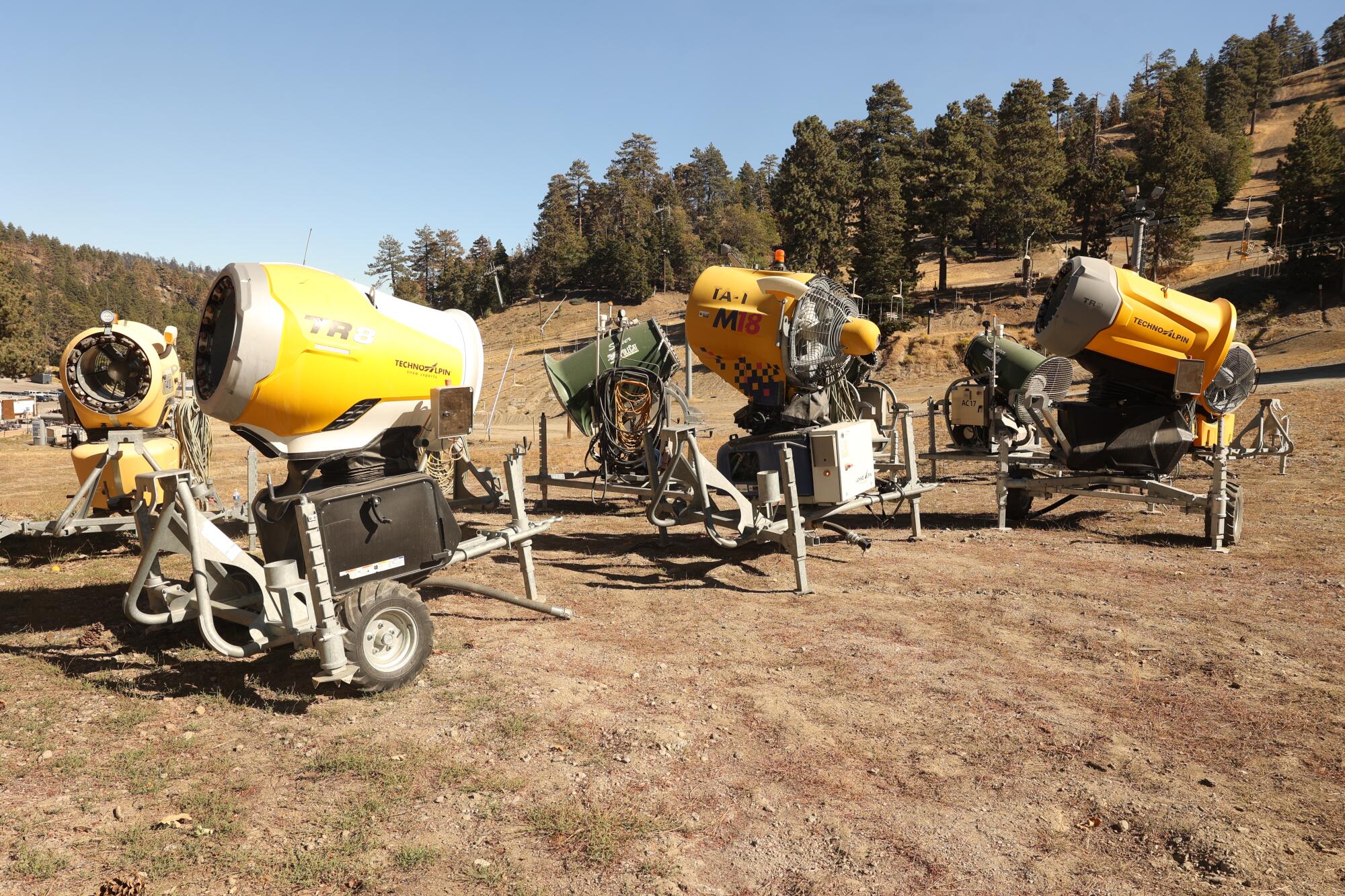
Smith directed staff to evacuate nearby campers. The team started pulling time sheets to make sure every employee was accounted for.
Smith sent another team member racing toward the snowmaking control center to activate the giant water system.
The team had stationed about 100 of their roughly 500 snow guns to defend the resort. While they could start about three quarters of them with the push of a button, the rest had to be turned on by hand.
As the majority of the staff evacuated, Smith and a handful of employees remained and raced around the property activating snow guns.
McColly monitored the fire’s progress via the resort’s live camera feed — which is intended to provide skiers a look at snow and weather conditions. He and countless others who had tuned in via social media beheld the flames with awe as they silhouetted a seemingly doomed ski lift terminal.
Smith had alerted fire crews, whom he knows personally through his role with the fire safety council and past wildfires, but they wouldn’t arrive for hours still.
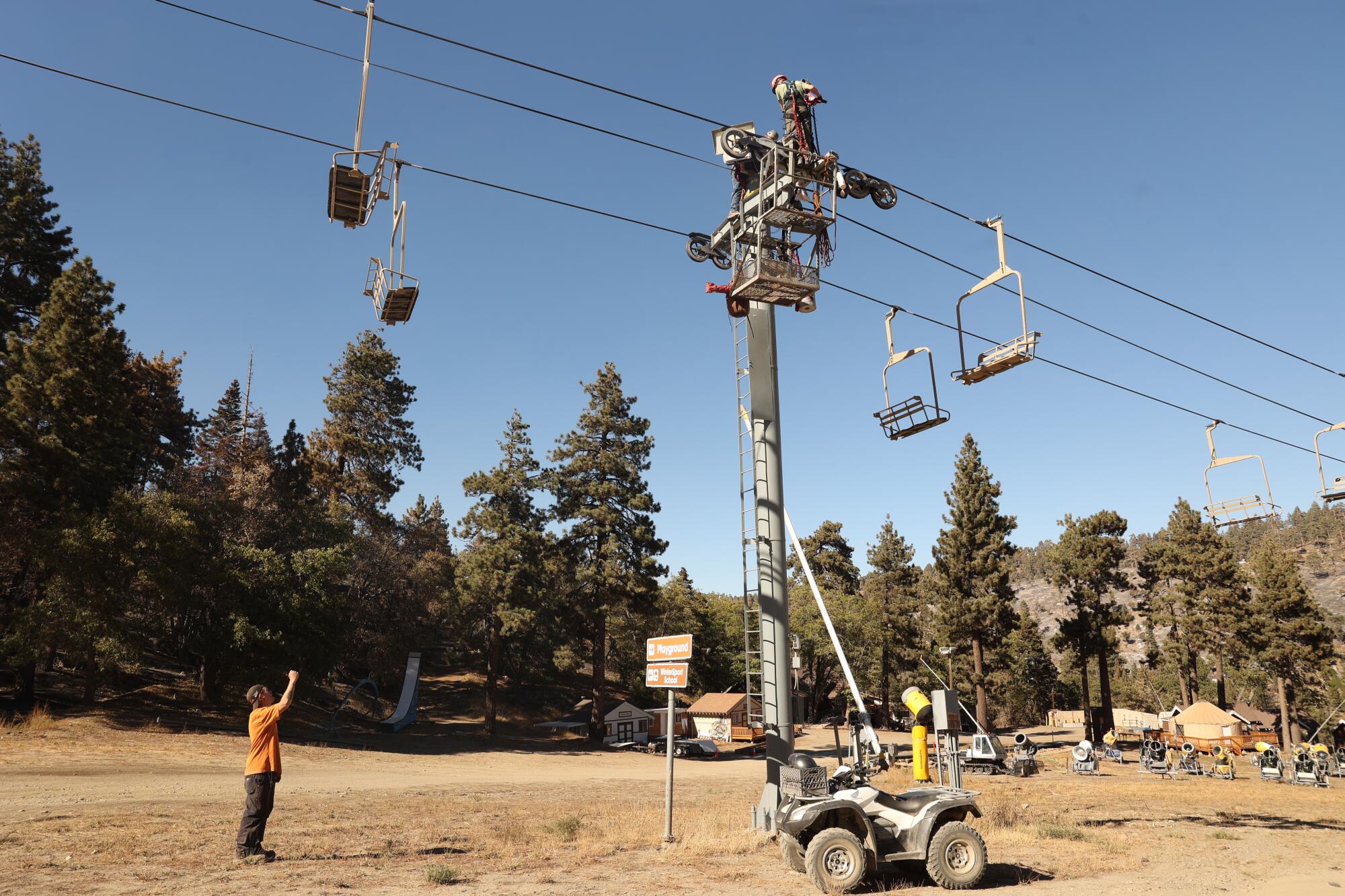
At multiple points, massive explosions shook the ground, accenting the roar of the fire.
The upper elevations of the resort lost power first. By 5:30 p.m., the base area went dark as well. Without electricity, the water pumps for the snow guns fell silent. Now, the guns were powered only by gravity, which sent water rushing downhill from the 500,000-gallon reservoirs and out the guns’ nozzles.
The shrub-like oak tree has been a fixture of the landscape since mastodons and saber-toothed cats last roamed Southern California.
As the fire burned through telephone poles, phone service went down.
The number of employees left at the resort dwindled to three. Then, two. Then, one: Smith.
At this point — 6:30 p.m. — fire flanked both sides of the resort. Realizing there was nothing left he could do, Smith made his escape.
“I wasn’t trying to be a hero,” he said. “I’ve got a wife and family.”
It wasn’t until night that firefighters were able to get to the scene.
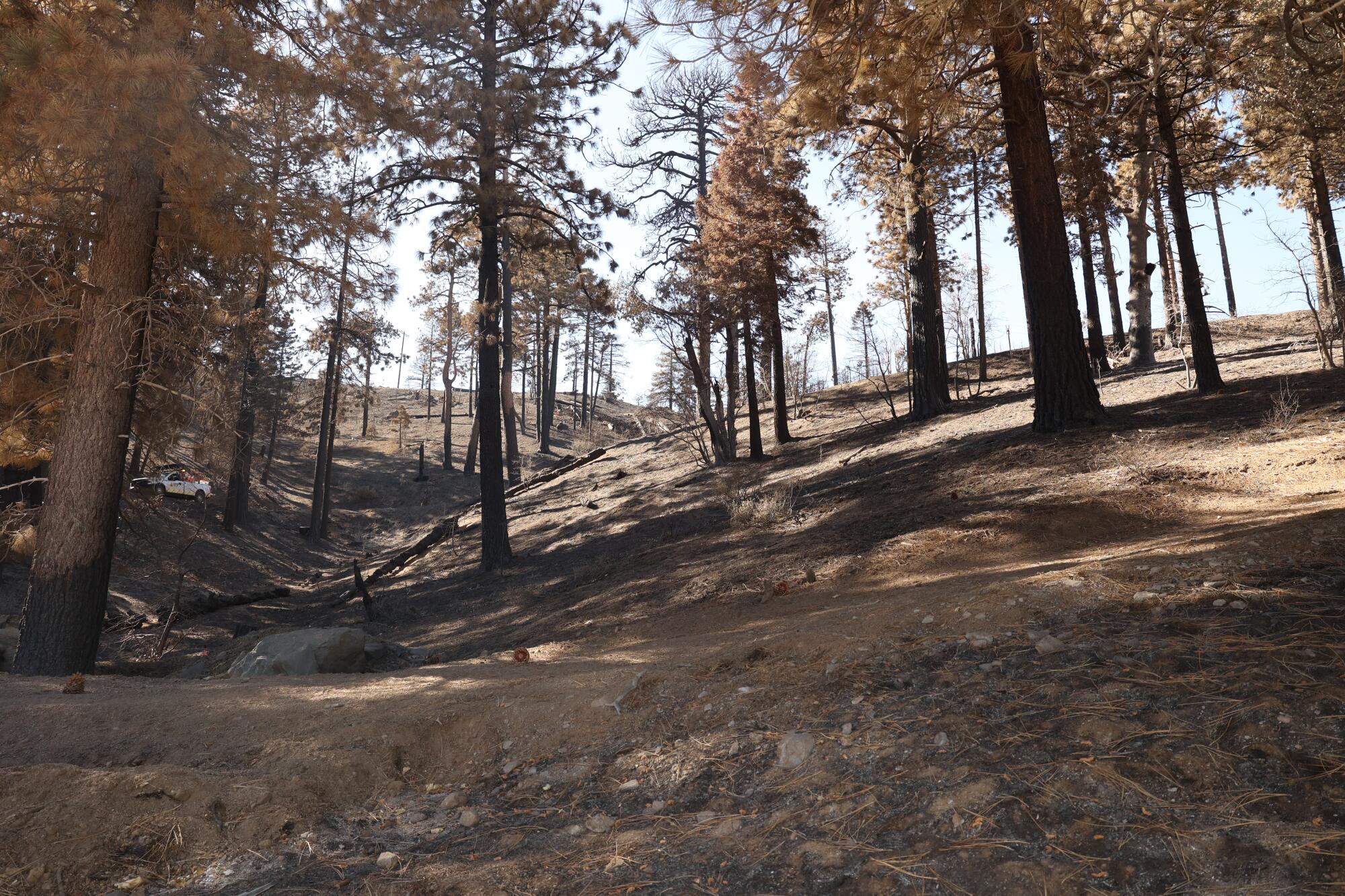
Smith arrived back at Mountain High the next morning to assess the damage and assist firefighters. The fire continued to rage on — still with hundred-foot flames, just not fanned by violent winds.
“I came up through Wrightwood, and before you get up to our East Resort, … you’re like, ‘hey, everything’s gone,’” Smith said. “But then you hit the East Resort and start seeing green trees, and you see buildings, and you’re like, ‘Well, damn, that ain’t so bad.’”
Not only was the majority of the resort standing, but the snowmaking guns were still pouring water onto the edge of the resort.
In all, the resort had one, unessential ski lift damaged, while a few ski patrol and maintenance shacks burned down.
“I’m very proud of my team,” Smith said. “A lot of what’s still standing here is because of them.”
Studies have laid bare the unequal distribution of L.A.’s tree canopy. A new report suggests historic inequities won’t be a quick fix.
When the resort isn’t a victim of the fires in Angeles National Forest, it frequently provides firefighters with an invaluable operations hub. Its buildings serve as a command center, its parking lot becomes a helipad, and its water reservoirs are essential resupply stations.
“Through the years, through the fires, through the fire safe council — just having the partnerships with all those groups and to be able to have all those contacts at your fingertips is amazing,” said Smith.
It took nearly a month to secure the resort and restore power, allowing the full team of employees to safely return.
By early October, crews worked to repave Highway 2, which was left cracked and scarred from the fire and the efforts to fight it.
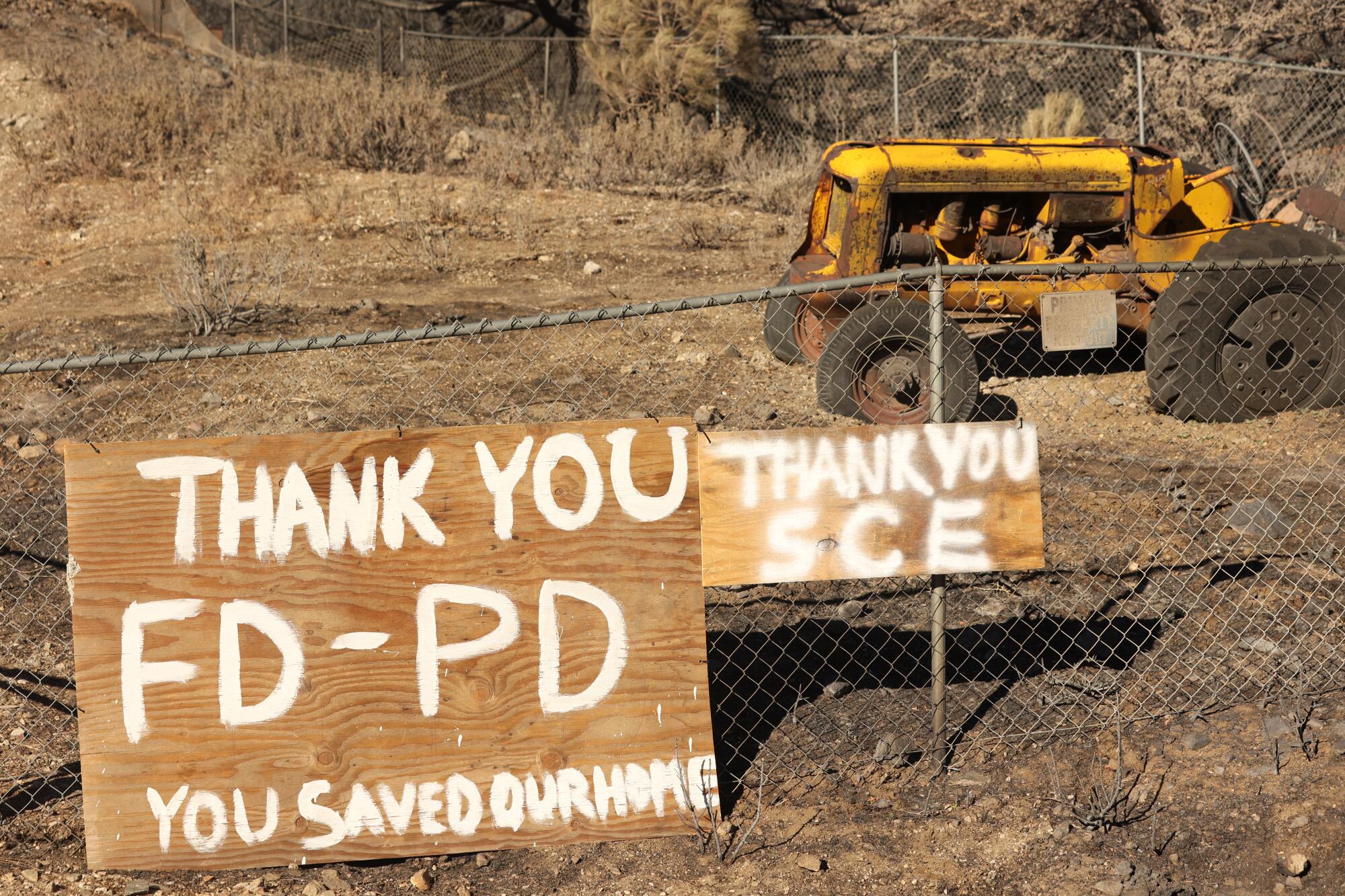
In Wrightwood, residents have adorned the city with homemade signs.
A piece of plywood, fixed to the Wrightwood city line sign, with black spray-painted letters read “Thank you for saving us.” A colorful hand-painted sign with a firetruck cartoon hung next to the fire station. “We [heart sign] you,” it read.
McColly had returned to his office in a historic cabin, which now smelled like wet rags and old cigarettes.
He turned his computer screen to show a season pass special offer for the resort’s 100th anniversary. Customers would receive a special hat and pin commemorating the season. And the resort would donate $25 to the American Red Cross Disaster Relief.
The Red Cross was onsite after the fire, supporting relief efforts, McColly said. Partnering with the Red Cross is a way to say thank you and pass the help forward.
“They were great to work with,” said McColly. “They really helped us out a lot.”

